Written by Alex Iskold
From the dynamics of social networks to market bubbles, science has a lot to say about the world of technology.
 One of the great discoveries of modern science was the realization of how interconnected the world is. The deterministic, Newtonian view of a clockwork Universe was replaced by the much more dynamic, uncertain and entangled world of Quantum Mechanics. The new world is the one where Godel forever cut hopes for completeness in mathematics and Turing showed that computation, like the future, is fundamentally unpredictable. Despite these unexpected setbacks, modern science is wonderful, powerful and thought provoking – and relevant to technologists.
One of the great discoveries of modern science was the realization of how interconnected the world is. The deterministic, Newtonian view of a clockwork Universe was replaced by the much more dynamic, uncertain and entangled world of Quantum Mechanics. The new world is the one where Godel forever cut hopes for completeness in mathematics and Turing showed that computation, like the future, is fundamentally unpredictable. Despite these unexpected setbacks, modern science is wonderful, powerful and thought provoking – and relevant to technologists.
The recently discovered science of complex systems is about common patterns that span diverse disciplines from physics to biology, from ecology to economics. This recent science of patterns is directly relevant to what we are doing around the Web. In this post we will discuss 5 different books that will get you fired up about modern science.
1. Godel, Escher, Bach, by Douglas Hofstadter
 This Pulitzer Prize winning book is a mind-opening journey that spans science, computation, zen, art, music and much much more. The book is most unusual in the way it tells its story. Some chapters are dialogs between Achilles and Tortoise. Other chapters are focused on Bach’s fugues and the theorems of great German mathematician Kurt Gordel.
This Pulitzer Prize winning book is a mind-opening journey that spans science, computation, zen, art, music and much much more. The book is most unusual in the way it tells its story. Some chapters are dialogs between Achilles and Tortoise. Other chapters are focused on Bach’s fugues and the theorems of great German mathematician Kurt Gordel.
Throughout the book, Hofstadter discusses the work of M.C. Escher, a painter famous for his paradoxical paintings that question how the mind perceives space. In addition, the book features chapters about modern genetics, zen buddhism and neuroscience. All of these seemingly diverse topics come together to discuss recursive structures, the mind, artificial intelligence and computation.
2. Complexity by Mitchell Waldrop
 Stephen Hawking once said: “I think the next century will be the century of complexity.” Complexity science is one of the most important breakthroughs in recent history. Unlike the traditional specialized approach to science, complexity focuses on patterns and properties that exist across different branches.
Stephen Hawking once said: “I think the next century will be the century of complexity.” Complexity science is one of the most important breakthroughs in recent history. Unlike the traditional specialized approach to science, complexity focuses on patterns and properties that exist across different branches.
Mitchell Waldrop’s book introduces readers to complexity by telling a story about the people who brought it into the spotlight. Among the characters we meet are economists, physicists, biologists and computer scientists responsible for establishing the Institute of Complex Systems in Santa Fe New Mexico. Through their stories, Walldrop introduces the reader to the wonderful and profound world of complex systems.
3. At Home in the Universe, by Stuart Kauffman
 Dr. Stuart Kauffman is one of the characters in the Walldrop’s book. He is one of the most passionate, dedicated and original thinkers about Complex Systems. A few decades ago, while in medical school, he wanted to understand gene networks and came up with a model known as K-N nets. Fascinated with the ideas, he choose science instead of medicine and went on to work on complexity.
Dr. Stuart Kauffman is one of the characters in the Walldrop’s book. He is one of the most passionate, dedicated and original thinkers about Complex Systems. A few decades ago, while in medical school, he wanted to understand gene networks and came up with a model known as K-N nets. Fascinated with the ideas, he choose science instead of medicine and went on to work on complexity.
In this book he explores a range of fascinating topics – like gene networks, auto-catalytic sets, rugged landscapes. It ultimately leads to the question of the origin of life. In this challenging book, Kauffman postulates that life is not an accident, but an expected and even inevitable consequence of the laws of self-organization.
4. The User Illusion, by Tor Norretranders
 During the twentieth century scientists made amazing discoveries about the brain. They also discovered just how little we know about the function of what is likely to be the most interesting and powerful object in the universe. Among the large number of books written on the subject, this book written by Danish journalist Tor Norretranders is a standout.
During the twentieth century scientists made amazing discoveries about the brain. They also discovered just how little we know about the function of what is likely to be the most interesting and powerful object in the universe. Among the large number of books written on the subject, this book written by Danish journalist Tor Norretranders is a standout.
The books builds on physics, particularly thermodynamics, to explain the fascinating aspects of human consciousness. While the first few chapters are somewhat challenging, the crux of the book will give you a unique, eye-opening perspective on the interplay between the human brain and mind. Among the shocking things in the book is a notion that it takes a half a second for our consciousness to process an event. Knowing that, it is difficult to think about the world in the same way.
5. Programming the Universe, by Seth Lloyd
 Quantum Information Theory is one of the hottest topics in science and Seth Lloyd is one of the hottest figures in the field. Famous for his bold predictions about the computational capacity of the universe, Dr. Lloyd belongs to the club that thinks that we live inside of a gigantic quantum computer. Sounds interesting? It is!
Quantum Information Theory is one of the hottest topics in science and Seth Lloyd is one of the hottest figures in the field. Famous for his bold predictions about the computational capacity of the universe, Dr. Lloyd belongs to the club that thinks that we live inside of a gigantic quantum computer. Sounds interesting? It is!
The book works the readers through the ideas of quantum information theory, explaining qbits, quantum superpositions and computation based on atoms. He argues that random fluctuations in the quantum foam produced higher-density areas, then matter, stars, galaxies and life. His conclusion is the same as Kauffman’s – life is not an accident nor its divine. Rather, life is a consequence of the laws of computation and self-organization.
Conclusion
There are so many great science books on topics ranging from physics and biology to economics and social science. These books discuss patterns in the world around us. And many of the themes are very familiar to us, technologists. This is why it is important for us to keep up and know what is going on in the world of science. Besides being fascinating, it is increasingly applicable and useful.
And now, please share with us your favorite science books – the ones that made a big impact on you and helped expand your mind.



















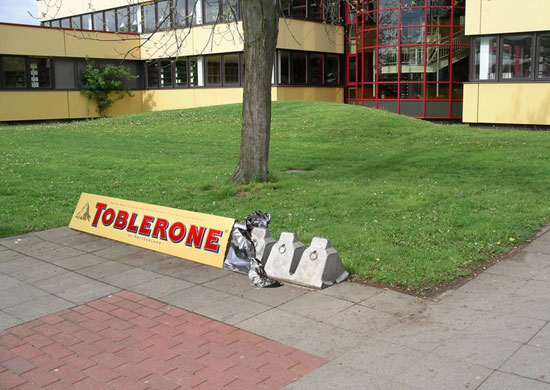

























 Love them or hate them, social networking sites are here to stay. Facebook and MySpace are among the most popular destinations on the web. And even though they can be extremely annoying, there is one inescapable fact: the most irritating thing about Facebook is the 100m-strong army of people who use it.
Love them or hate them, social networking sites are here to stay. Facebook and MySpace are among the most popular destinations on the web. And even though they can be extremely annoying, there is one inescapable fact: the most irritating thing about Facebook is the 100m-strong army of people who use it.





 So Android has arrived with the announcement of the T-Mobile G1. The HTC-manufactured phone certainly has a few nice touches, despite its lack of multi-touch (and with T-Mobile’s particular variant, no accelerometer).
So Android has arrived with the announcement of the T-Mobile G1. The HTC-manufactured phone certainly has a few nice touches, despite its lack of multi-touch (and with T-Mobile’s particular variant, no accelerometer).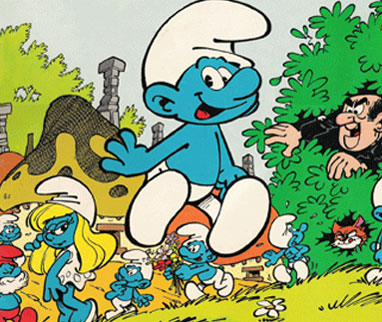 One female in the entire population. One red-hatted elder who holds no real power but is in charge of keeping the village work organized. Everyone has the same size house. Everyone has the same power and authority. Everyone has a unique skill that contributes to the harmony of the population. Everyone is blue. Smurf your smurfing communist conspiracies, this was a wholesome tale about being unique. While they all looked the same, dressed the same, and lived the same, they all had unique personality traits that helped to save the group from mean old Gargamel and that hungry, misunderstood Azrael. Coincidentally, there was a local band back in the mid-nineties called Liquid Azrael who did a mean cover of Sesame Street’s 1-2-3-5-6-7-8-9-10-11-12. SMURF YOU! I thought that was entirely smurfing relevant to the discussion (smurfing smurf-holes…).
One female in the entire population. One red-hatted elder who holds no real power but is in charge of keeping the village work organized. Everyone has the same size house. Everyone has the same power and authority. Everyone has a unique skill that contributes to the harmony of the population. Everyone is blue. Smurf your smurfing communist conspiracies, this was a wholesome tale about being unique. While they all looked the same, dressed the same, and lived the same, they all had unique personality traits that helped to save the group from mean old Gargamel and that hungry, misunderstood Azrael. Coincidentally, there was a local band back in the mid-nineties called Liquid Azrael who did a mean cover of Sesame Street’s 1-2-3-5-6-7-8-9-10-11-12. SMURF YOU! I thought that was entirely smurfing relevant to the discussion (smurfing smurf-holes…).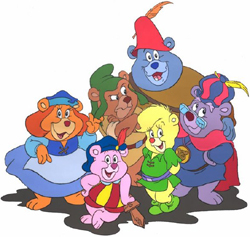 Bouncing here and there and everywhere. You remember the show, don’t you? Disney animated Gummi Bears was a fun romp following the escapades of the furry little bears who drank magic Gummiberry Juice and bounced around the forest and outsmarted Duke Igthorn every week. The production quality of the show was great and would set the benchmark for all the other great Disney cartoons that would soon follow it. The show began the great Disney Afternoon timeslot run, which included many great shows such as DuckTales, Darkwing Duck, Chip ‘n Dale Rescue Rangers, TaleSpin, and Gargoyles.
Bouncing here and there and everywhere. You remember the show, don’t you? Disney animated Gummi Bears was a fun romp following the escapades of the furry little bears who drank magic Gummiberry Juice and bounced around the forest and outsmarted Duke Igthorn every week. The production quality of the show was great and would set the benchmark for all the other great Disney cartoons that would soon follow it. The show began the great Disney Afternoon timeslot run, which included many great shows such as DuckTales, Darkwing Duck, Chip ‘n Dale Rescue Rangers, TaleSpin, and Gargoyles.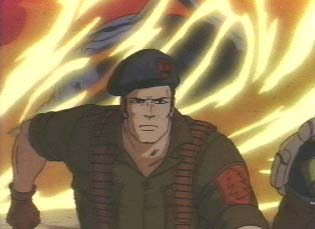 GI Joe: A Real American Hero was a half an hour of pure entertainment. Hawk and Sgt. Slaughter on operations with the significance on par with the biggest moments in history. Could Hasbro have any idea how successful GI Joe would be in the animation realm? These cartoons were flashy, loud, in your face, and all around dominating. GI Joe’s strength and rigor were consistently tested by Cobra who was always stealing shit like teleportation units and weapons that could manipulate weather. These were certainly large tasks for the GI Joe team all bundled up in half an hour segments. You got what you sat down for when watching GI Joe. You wanted these cartoon to last an hour instead.
GI Joe: A Real American Hero was a half an hour of pure entertainment. Hawk and Sgt. Slaughter on operations with the significance on par with the biggest moments in history. Could Hasbro have any idea how successful GI Joe would be in the animation realm? These cartoons were flashy, loud, in your face, and all around dominating. GI Joe’s strength and rigor were consistently tested by Cobra who was always stealing shit like teleportation units and weapons that could manipulate weather. These were certainly large tasks for the GI Joe team all bundled up in half an hour segments. You got what you sat down for when watching GI Joe. You wanted these cartoon to last an hour instead.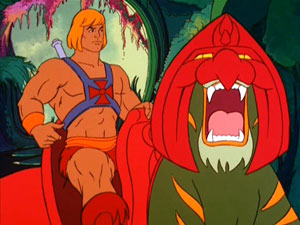 He-Man was the strongest of the strong. The most powerful of the most powerful, and he embodied all these qualities in the 80’s cartoon that spoke to a generation of nerds who wanted to hold the power of He-Man. Maybe we also liked the fact that He-Man could probably get any women he wanted to, and we couldn’t. At least we were honest in our admiration of that which was better than us lonely nerds seeking solace in a fictional cartoon. Who else could blow a gust of wind so powerful that it could knock opponents off a cliff? Who else could rub their hands together fast enough to turn sand into glass? He-Man is the ubermanch of the modern cartoon world. If only it were real. If only we were able to be He-Man for one day.
He-Man was the strongest of the strong. The most powerful of the most powerful, and he embodied all these qualities in the 80’s cartoon that spoke to a generation of nerds who wanted to hold the power of He-Man. Maybe we also liked the fact that He-Man could probably get any women he wanted to, and we couldn’t. At least we were honest in our admiration of that which was better than us lonely nerds seeking solace in a fictional cartoon. Who else could blow a gust of wind so powerful that it could knock opponents off a cliff? Who else could rub their hands together fast enough to turn sand into glass? He-Man is the ubermanch of the modern cartoon world. If only it were real. If only we were able to be He-Man for one day. Transformers Generation 1 was a firestorm for the cartoon market. It had everything a kid wanted. Robots destroying robots. Robots transforming into even bigger robots. Robots combining powers to destroy even bigger combining transforming robots. This show was huge and anyone who ever wanted to be a machine man would identify with Transformers austere disposition. Was there ever more of a recognizable robot in all of cartoon fiction that Optimus Prime? He is referenced everywhere in modern TV and for good reason. He was the first non-sentimental protagonist in robot history. He smashed buildings at will and dominated destructive bots at the drop of an oil spill from his energy tank. The transition from comic book to cartoon was flawless for Transformers, with the cartoon actually becoming more successful than the comic book. This certainly can be called a smooth transition.
Transformers Generation 1 was a firestorm for the cartoon market. It had everything a kid wanted. Robots destroying robots. Robots transforming into even bigger robots. Robots combining powers to destroy even bigger combining transforming robots. This show was huge and anyone who ever wanted to be a machine man would identify with Transformers austere disposition. Was there ever more of a recognizable robot in all of cartoon fiction that Optimus Prime? He is referenced everywhere in modern TV and for good reason. He was the first non-sentimental protagonist in robot history. He smashed buildings at will and dominated destructive bots at the drop of an oil spill from his energy tank. The transition from comic book to cartoon was flawless for Transformers, with the cartoon actually becoming more successful than the comic book. This certainly can be called a smooth transition.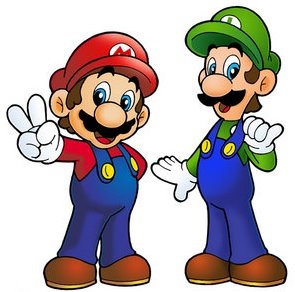 Of course we had to include Mario Brothers on our list, not only because it’s Nintendo’s main protagonist, but because the show had such great storylines and ironic twists that it led to a pure entertainment experience. Luigi was being pulled down drains, Mario was rapping with Milli Vanilli up in the clouds, and the Princess was looking as good Natalie Portman in Closer. Their adventures would take them to the sea, the desert and to all the areas in the actual Mario Brothers game. Everyone who played the Mario games enjoyed this cartoon. Bowser was up to his old antics chasing the brothers around the world all the while contemplating world domination. The Mario Brothers can never do wrong, and they continued their successful streak with this fun cartoon.
Of course we had to include Mario Brothers on our list, not only because it’s Nintendo’s main protagonist, but because the show had such great storylines and ironic twists that it led to a pure entertainment experience. Luigi was being pulled down drains, Mario was rapping with Milli Vanilli up in the clouds, and the Princess was looking as good Natalie Portman in Closer. Their adventures would take them to the sea, the desert and to all the areas in the actual Mario Brothers game. Everyone who played the Mario games enjoyed this cartoon. Bowser was up to his old antics chasing the brothers around the world all the while contemplating world domination. The Mario Brothers can never do wrong, and they continued their successful streak with this fun cartoon.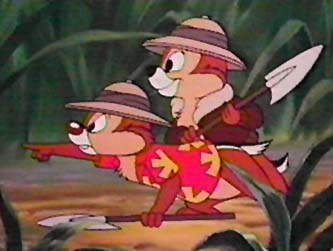 Rescue Rangers went side by side with Duck Tales with the title of greatest cartoon of the 80’s. The adventures of Chip and Dale would last in the viewers head for some time to come. They were always avoiding a fat cat who appropriately smoked a massive cigar signifying smoking negativity to an impressionable youth. Gadget came up with the best technological designs to ward off the fat cat while always looking stunning for a pale faced rat. Both Chip and Dale would fight over her throughout the series. Some of these conflicts became some of the best moments in the cartoon series. Some of the most memorable moments came from their adventures on their hot air balloon traversing the globe in search of their desires. Memorable characters, great inventions, great story lines, Rescue Rangers was a great cartoon.
Rescue Rangers went side by side with Duck Tales with the title of greatest cartoon of the 80’s. The adventures of Chip and Dale would last in the viewers head for some time to come. They were always avoiding a fat cat who appropriately smoked a massive cigar signifying smoking negativity to an impressionable youth. Gadget came up with the best technological designs to ward off the fat cat while always looking stunning for a pale faced rat. Both Chip and Dale would fight over her throughout the series. Some of these conflicts became some of the best moments in the cartoon series. Some of the most memorable moments came from their adventures on their hot air balloon traversing the globe in search of their desires. Memorable characters, great inventions, great story lines, Rescue Rangers was a great cartoon.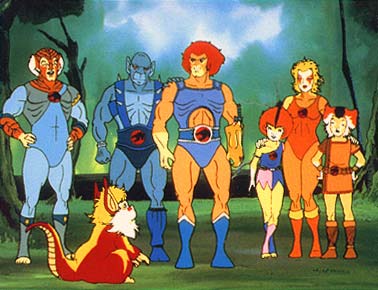 The eighties were all about team work, and no cartoon exemplified this more than Thundercats. Generally speaking, cats are solitary creatures, except for lions of course, which is probably why Lion-o was the leader, since he was the only one who had experience working in groups. You never see packs of cheetahs or jaguars though, let alone a mixed pack of the feline species, or kingdom, or phylum, or whatever (I was never good at biology). Anyway Thundercats had a similar plot to Superman, their planet blew up and they had to flee so they ended up crashing on a planet called Third Earth. What happened to the first two we’ll never know since that was never addressed in the plot. They also fought a mummy and creatively enough his name was Mum-ra. This show was great, personally I loved the snarfs the most. Though I often wondered if the thundercats would eat them if times got bad. I also had a huge crush on Cheetara, she was such a babe.
The eighties were all about team work, and no cartoon exemplified this more than Thundercats. Generally speaking, cats are solitary creatures, except for lions of course, which is probably why Lion-o was the leader, since he was the only one who had experience working in groups. You never see packs of cheetahs or jaguars though, let alone a mixed pack of the feline species, or kingdom, or phylum, or whatever (I was never good at biology). Anyway Thundercats had a similar plot to Superman, their planet blew up and they had to flee so they ended up crashing on a planet called Third Earth. What happened to the first two we’ll never know since that was never addressed in the plot. They also fought a mummy and creatively enough his name was Mum-ra. This show was great, personally I loved the snarfs the most. Though I often wondered if the thundercats would eat them if times got bad. I also had a huge crush on Cheetara, she was such a babe.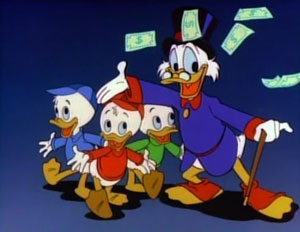 Everyone remembers the theme song to Duck Tales, and for good reason. Everyone watched every episode of this show. After school at 4:00, you knew where you were. You were on the couch eating an early dinner or snack watching Duck Tales. Scrooge McDuck and the boys were constantly getting into trouble or preventing trouble. The adventures that the three of them would go on would be epic. They went through Amazon rain forests, go back in time to ancient Greece, and even deep underwater looking for a fortune for their rapacious uncle. This show would never get dull, and the viewer was always on edge experiencing the tales of the young anthropomorphic ducks. Duck Tales was one of the best of the 80’s cartoons. You couldn’t watch just one episode.
Everyone remembers the theme song to Duck Tales, and for good reason. Everyone watched every episode of this show. After school at 4:00, you knew where you were. You were on the couch eating an early dinner or snack watching Duck Tales. Scrooge McDuck and the boys were constantly getting into trouble or preventing trouble. The adventures that the three of them would go on would be epic. They went through Amazon rain forests, go back in time to ancient Greece, and even deep underwater looking for a fortune for their rapacious uncle. This show would never get dull, and the viewer was always on edge experiencing the tales of the young anthropomorphic ducks. Duck Tales was one of the best of the 80’s cartoons. You couldn’t watch just one episode.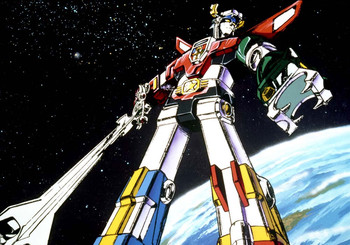 This was the pinnacle of 80s cartoons. It combined all the genius of the previously listed cartoons, animals (specifically lions), robots, magic, monsters, space travel, swords, babely babes, and mean bitches. The five robot lines were each stored in the most awesome garages ever, needless to say they were perfectly suited for the elemental association each lion carried with it. Keith was the leader, he was your typical hero, quick on his feet and cool in command. Lance was the cool guy, he might have been French, I don’t know, either way I bet he got laid the most, he had that sort of troubled vibe. The princess was also a babe, I had a crush on her too. Imagine a threesome with her and Cheetara, now that would be freaky. Then there was the nerd pidge. He seemed like the type that might have installed a camera in the princess’s shower. Finally was the muscle, Hunk. He’s the guy you take to the bar so when you pick a fight he can beat everyone up.
This was the pinnacle of 80s cartoons. It combined all the genius of the previously listed cartoons, animals (specifically lions), robots, magic, monsters, space travel, swords, babely babes, and mean bitches. The five robot lines were each stored in the most awesome garages ever, needless to say they were perfectly suited for the elemental association each lion carried with it. Keith was the leader, he was your typical hero, quick on his feet and cool in command. Lance was the cool guy, he might have been French, I don’t know, either way I bet he got laid the most, he had that sort of troubled vibe. The princess was also a babe, I had a crush on her too. Imagine a threesome with her and Cheetara, now that would be freaky. Then there was the nerd pidge. He seemed like the type that might have installed a camera in the princess’s shower. Finally was the muscle, Hunk. He’s the guy you take to the bar so when you pick a fight he can beat everyone up.